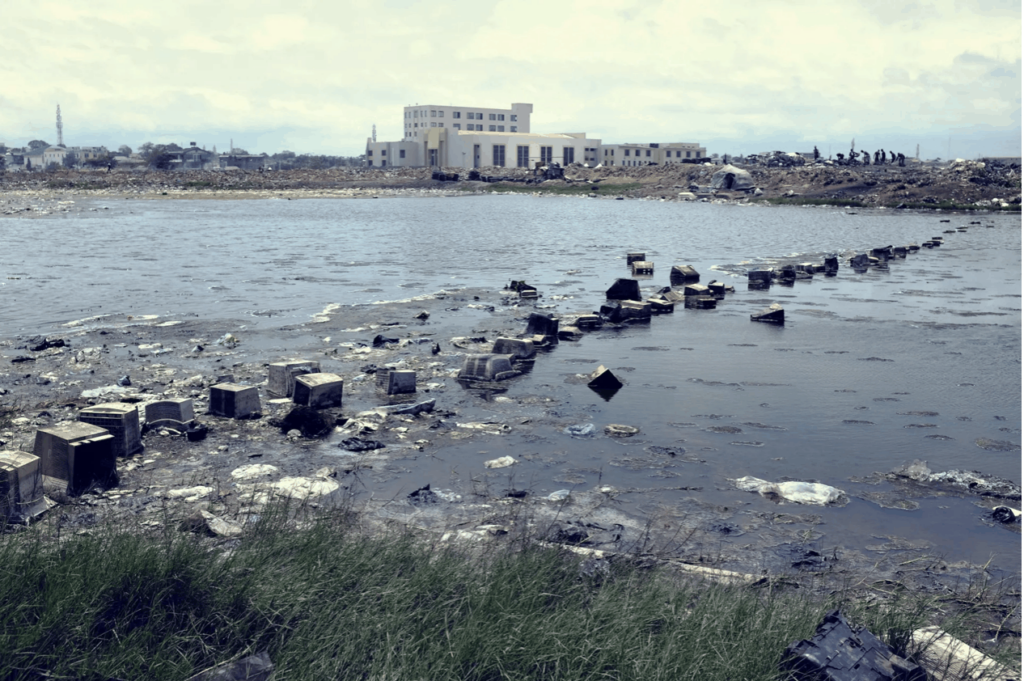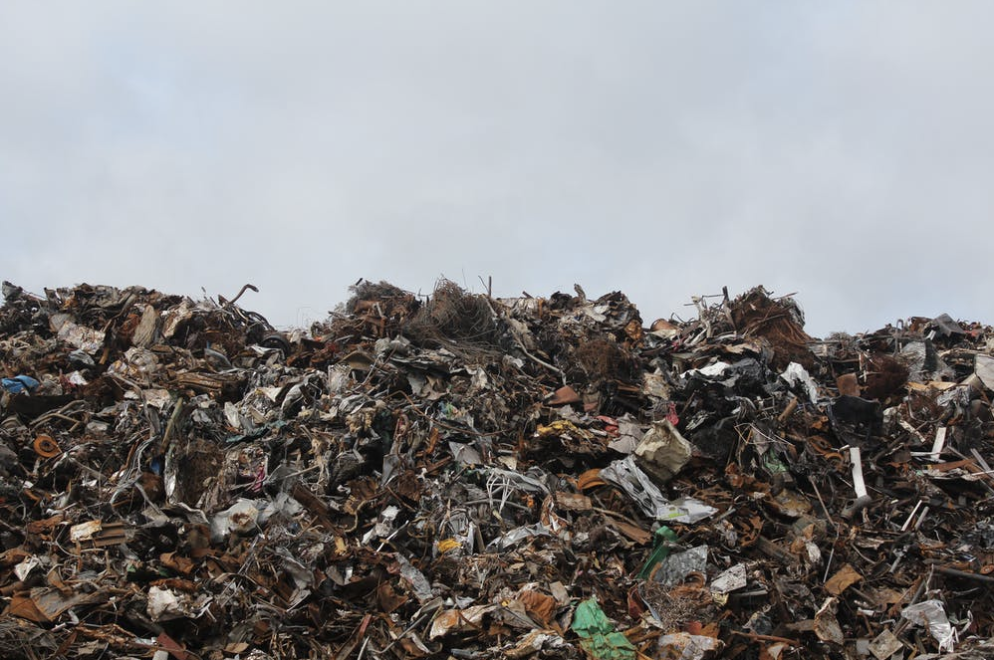Infrastructure the E-waste
In this commentary, I attempted to establish a link between infrastructure and e-waste to tour and document its contemporary impact. On the one hand, e-waste contributes to the growing inequality of the ecological and economic environment worldwide. On the other hand, it becomes a part of the anthropocene, deepening our vision in the material consequence of the media.

In the hills overlooking the resort where the G-7 leaders met, stood a giant statue of those politicians made of discarded electronics. Entitled Mountain Recyclemore by artists Joe Rush and Alex Wreckage, it was a hilarious parody of Mountain Rushmore and a strong political manifesto calling for dealing with electronic waste. It highlighted a serious issue in the overlapping fields of ecology, technology, and political economy.
According to The Global E-waste Monitor 2020 (13), e-waste refers to a waste stream generated by disposed electrical and electronic equipment (EEE), which contain hazardous and precious materials. In 2019, the world generated a striking 53.6 Mt of e-waste, an average of 7.3 kg per capita, as a result of higher consumption rates of EEE, short life cycles, and few repair options. In middle- and low-income countries, e-waste is often handled under inferior conditions, resulting in pollution and severe health effects to people who live near e-waste management activities.
E-waste is overlooked in the daily lives of most people, while it plays a significant role in modern society. New media appear to become “dead media” once they lose accessibility and availability, but it does not put an end of being contemporary. The astonishing amount of e-waste is constantly leading to a worldwide chain reaction, reordering our understanding of new media and their ecology.
The Connection of Infrastructure and E-waste
Considering the infrastructure of our digital lives, it always recalls electricity, cable wires, and data centers. Star and Bowker (230) define infrastructure as what runs “underneath” actual structures. Here “underneath” stands for concealed and invisible properties.

In the comprehensive article Infrastructural Tourism, Shannon Mattern, drawing on Adrian Mackenzie’s research, points out that visiting infrastructure is “an attempt to understand these new entanglements, sensations, and practices, these network-associated changes — this new way of being.”
In this sense, e-waste can be regarded as a special representation or a mirror image of infrastructure, basing on which structured the process of managing valuable materials, locating human behaviors, and understanding the corporality of new media. It is hidden from everyday life in cities, remaining a black box that stores valuable information on the contemporary digital world before its “crashing”.
Focusing on infrastructure encourages a deep and thorough look at “what media are made of”(Parks), as well as what media have become. Grossman (5) notes that each neatly packed electronic device originates from mines, refineries, factories, rivers, and aquifers, and ends on pallets, in dumpsters, landfills, and in poor people’s backyards around the globe. Our being is based on that, but also obscures that.
With Mattern’s methodology, it is convincing that understanding the other end of infrastructure entails touring and documenting e-waste to “make the process more perceivable”. I would like to apply this strategy from two different perspectives — the flow and the deposit of e-waste.
The Flow of E-waste and Social Inequality
As there are material, social, and economic infrastructures that bolster the development and circulation of electronic products, so are there complex infrastructures for removing electronic waste. (Gabrys vi)
The stream of e-waste flows not only from users to dumpsters, but also from developed countries to developing countries. According to Interpol, many discarded electronic products are “falsely classified as ‘used goods’ although in reality it is non-functional”, thus they are diverted to the black market in Asia or Africa to avoid the costs associated with legitimate recycling. These goods may subsequently be processed in dangerous and inefficient conditions, harming the health of local people and damaging the environment.


In this invisible world, e-waste surrounds the lives of thousands of people. The leftovers of the western world are beginning to define the existence of places less fortunate.
Adeola (57-85) explains it from the standpoint of global political economy, illustrating that e-waste represents the pattern of technology and material flows in the contemporary globalized economy, where capital and materials flow across geopolitical boundaries and create global inequality. Impoverished countries import e-waste either to gain a little foreign exchange or looking forward to finding profitable constituents of these for recycling. While profits and technologies gravitate towards the Global North, environmental pollution and adverse health effects are driven out along the paths of least resistance as by-products of capital circulation.
Touring along with the flow of e-waste enables us to catch sight of this cruel reality, thereby transforming “visitors” into “witnesses” and “actors”.


The Deposit of E-waste and Fossils of the Anthropocene
Geologists propose the term Anthropocene to reflect the dramatic changes that humans have done to the planet (Crutzen 13). In this new geological epoch, human-led actions have been intensively affecting the global stratigraphic record.
The accelerated development of digital culture brings out “the temporal disjuncture between the relative speeds of geological processes and industrial technoculture.”(Taffel) Industrial production of EEE consumes fossil fuels from millions ago in several months, giving rise to ecological upheavals while other non-human ecosystems are left behind to extinction.
When these pieces of equipment end up in landfills, the dumped e-waste reversely accumulates into geologic sediments, forming fossil remains for both obsolete technologies and human lives. The materiality of media has never been so apparent until the virtuality is deprived. Furthermore, in this relation to geophysical nature, the materiality is no longer a passive carrier of technologies, as Parikka points out (viii), but a medium itself that “affords and bears the weight of media culture, from metals and minerals to its waste load”.
This brings us back to Mattern’s vision in generating “not just awareness about existing infrastructures but also the capacity to imagine potential ones.” To connect the infrastructure with e-waste helps us consciously look into the base of our digital lives and critically intervene with the issues. Clearly, there is an urgent need for major adjustments to the material infrastructure and consumption practices that support the digital culture today and tomorrow.

References
Adeola, Francis. Hazardous Wastes, Industrial Disasters, and Environmental Health Risks: Local and Global Environmental Struggles. 2011th ed., New York, Palgrave Macmillan, 2011.
Ciaglo, Michael. “A Digital Dump.” Michael Ciaglo, 2013, www.michaelciaglo.com/agbogbloshie-a-digital-dump.
Crutzen, Paul J. “The ‘Anthropocene.’” Earth System Science in the Anthropocene, 2006, pp. 13–18. Crossref, doi:10.1007/3-540-26590-2_3.
Forti, Vanessa, et al. “The Global E-Waste Monitor 2020.” Ewastemonitor, 2020, ewastemonitor.info.
Gabrys, Jennifer. Digital Rubbish: A Natural History of Electronics. Illustrated, University of Michigan, 2013.
Grossman, Elizabeth. High Tech Trash: Digital Devices, Hidden Toxics, and Human Health. Shearwater, 2006.
Mackenzie, Adrian. Wirelessness: Radical Empiricism in Network Cultures. The MIT Press, 2010.
Mattern, Shannon. “Infrastructural Tourism.” Places Journal, 2013, doi:10.22269/130701.
McElvaney, Kevin. “Agbogbloshie: The World’s Largest e-Waste Dump – in Pictures.” The Guardian, 2014, www.theguardian.com/environment/gallery/2014/feb/27/agbogbloshie-worlds-largest-e-waste-dump-in-pictures.
Parikka, Jussi. A Geology of Media (Electronic Mediations). Vol. 46, U of Minnesota Press, 2015.
Star, Susan, and Geoffrey Bowker. “How to Infrastructure.” Handbook of New Media: Social Shaping and Consequences of ICTs, edited by Leah Lievrouw and Sonia Livingstone, SAGE, 2002, pp. 230–45.
Taffel, Sy. “Technofossils of the Anthropocene.” Cultural Politics, vol. 12, no. 3, 2016, pp. 355–75. Crossref, doi:10.1215/17432197-3648906.
Vidal, John. “Toxic ‘e-Waste’ Dumped in Poor Nations, Says United Nations.” The Guardian, 14 Dec. 2013, www.theguardian.com/global-development/2013/dec/14/toxic-ewaste-illegal-dumping-developing-countries.